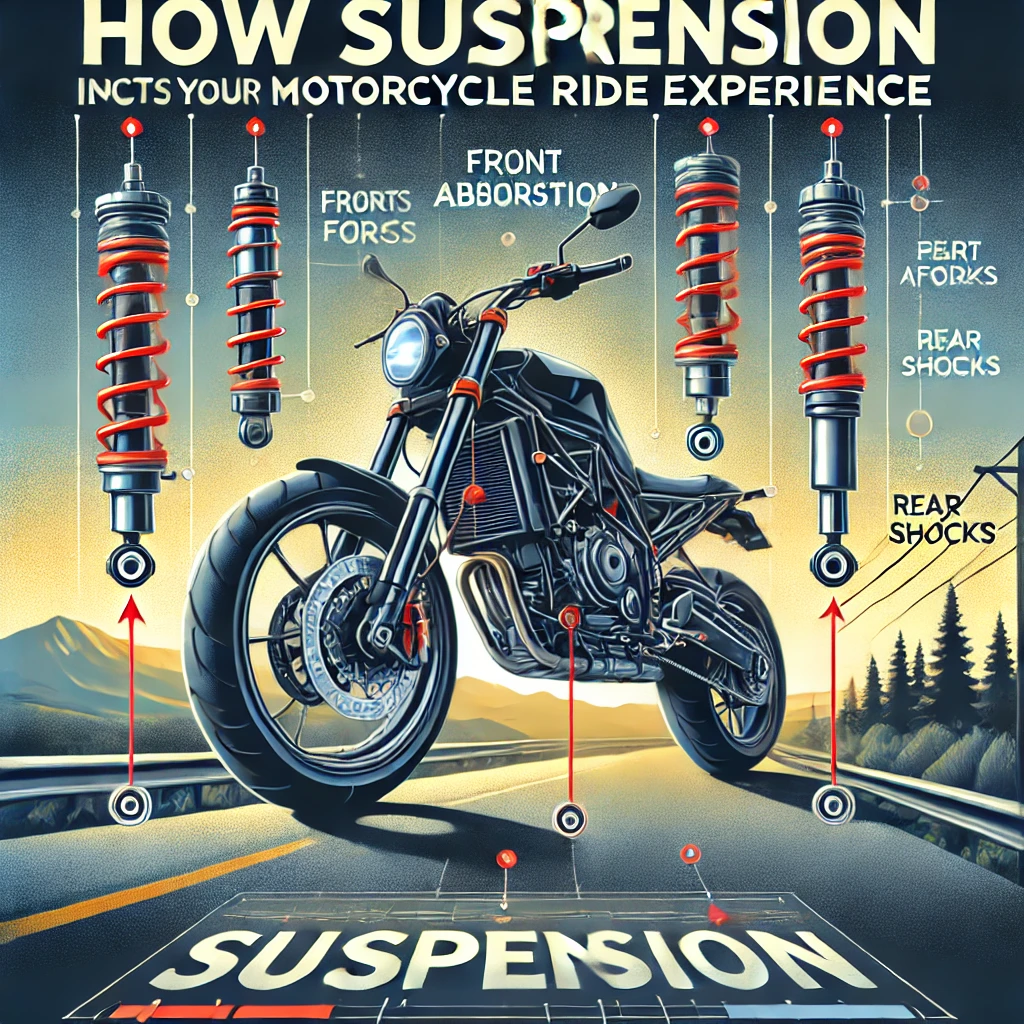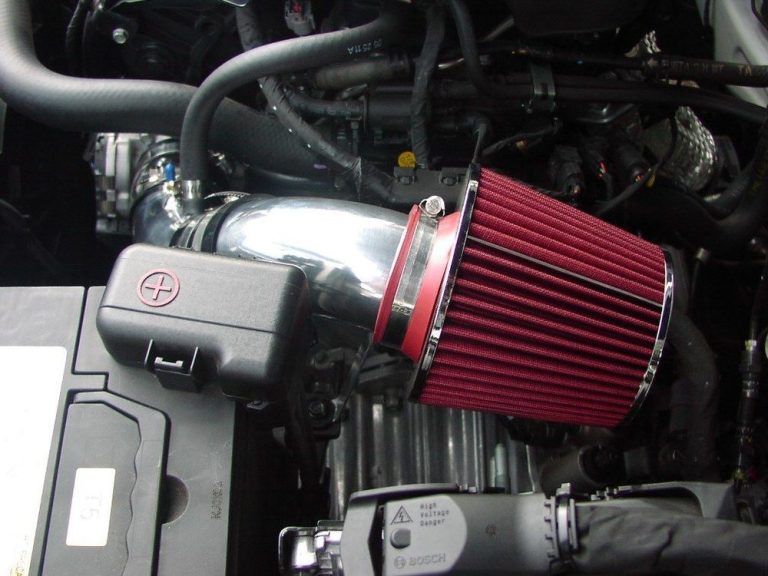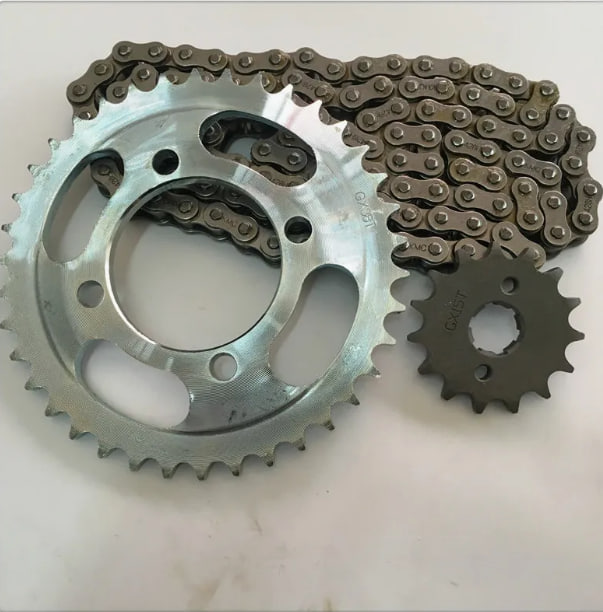How Suspension Impacts Your Motorcycle Ride Experience

The Role of Motorcycle Suspension
Suspension systems are integral to the motorcycle experience, influencing both ride comfort and handling. Whether you’re navigating city streets or tearing through mountain curves, the right suspension setup can make a significant difference in how your bike responds to the road. Understanding how motorcycle suspension works and its components helps you customize your ride for enhanced comfort and performance.
What is Motorcycle Suspension?
The motorcycle suspension system is composed of components that connect the wheels to the frame and absorb shocks from road irregularities. This system ensures that the wheels maintain contact with the road, contributing to stability, safety, and comfort. The main components of a motorcycle suspension system are forks (front suspension) and shock absorbers (rear suspension).
Key Components of Motorcycle Suspension
1. Front Suspension (Forks)
The front suspension typically consists of telescopic forks that contain springs and damping mechanisms:
- Fork Tubes: Slide within an outer tube, compressing and extending to absorb bumps.
- Damping Mechanism: Controls the speed of compression and rebound, preventing the ride from becoming bouncy or harsh.
- Cartridge Forks: Common in sportbikes, these forks provide better damping control and adjustability compared to conventional types.
2. Rear Suspension (Shock Absorbers)
The rear suspension can come in various configurations, including monoshock and twin-shock setups:
- Monoshock: A single shock absorber that connects the swingarm to the bike’s frame, providing improved handling and adjustability.
- Twin-Shock: Dual shock absorbers on either side of the rear wheel, common in older or classic motorcycles.
- Swingarm: A key component that holds the rear wheel and connects it to the chassis, playing a role in how the rear suspension operates.
3. Springs and Damping
Suspension systems include springs to absorb impacts and dampers to control the spring’s motion:
- Compression Damping: Manages the force as the suspension compresses when hitting a bump.
- Rebound Damping: Controls how quickly the suspension returns to its original position after compression.
How Suspension Impacts Ride Comfort and Handling
1. Ride Comfort
The suspension system’s primary role is to absorb shocks from uneven surfaces, ensuring a smoother ride. Proper suspension adjustment helps reduce vibrations, minimizing fatigue during long rides. For touring or commuter bikes, soft suspension settings provide maximum comfort by absorbing most road imperfections.
2. Handling and Stability
The suspension system directly influences how the motorcycle handles corners and responds to sudden changes in direction. Stiffer suspension settings are common in sportbikes, as they offer better feedback and cornering precision. However, this may lead to a rougher ride over bumpy terrain.
Tip: Adjust your suspension based on your riding style and the type of terrain you typically encounter. Softer settings are great for comfort, while firmer settings enhance performance during aggressive riding.
3. Traction
Suspension helps keep the tires in contact with the road, improving traction and braking performance. A poorly adjusted suspension may cause the wheels to lose contact, especially over bumps or during hard braking, leading to reduced stability and safety.
Types of Motorcycle Suspension Systems
1. Conventional Telescopic Forks
These are the most common type of front suspension and are suitable for a variety of motorcycle styles, from cruisers to standard bikes. They offer a balance of comfort and performance but may lack the adjustability found in more advanced systems.
2. Inverted Forks (Upside-Down Forks)
Popular in sportbikes, inverted forks position the larger, heavier portion of the fork closer to the top, reducing unsprung weight and improving handling. They provide better stability during aggressive cornering.
3. Monoshock Systems
The monoshock is a single rear shock absorber connected to the swingarm and bike frame. This system offers greater adjustability and better handling, as it distributes weight more evenly.
4. Twin-Shock Systems
These are often seen on vintage and classic bikes. While not as advanced as monoshocks, they can still offer decent ride comfort and are easier to maintain.
Adjusting Your Motorcycle Suspension
1. Preload Adjustment
Preload adjusts the initial tension of the suspension springs. Setting preload correctly ensures that the suspension can compress and rebound properly, supporting the rider’s weight and any additional load.
Tip: When adjusting preload, consider your weight, riding style, and whether you often carry passengers or luggage.
2. Compression and Rebound Damping
- Compression Damping: Adjust this to control how quickly the suspension compresses over bumps. Too much compression damping can lead to a harsh ride, while too little can make the ride feel loose.
- Rebound Damping: Controls the speed at which the suspension returns to its original position after compression. Incorrect rebound damping can cause excessive bouncing or sluggish handling.
3. Suspension Tuning for Different Riding Conditions
- City Riding: Softer suspension settings absorb potholes and uneven surfaces, improving comfort.
- Highway Touring: Moderate settings balance comfort and stability for long distances.
- Track and Performance Riding: Stiffer suspension enhances handling and responsiveness, providing better feedback during high-speed maneuvers.
Maintenance Tips for Motorcycle Suspension
1. Regular Inspections
Check for leaks or damage to the fork seals and shock absorber. A leaking fork can lead to reduced damping and dangerous handling issues.
2. Fork Oil Replacement
Fork oil helps with damping and needs to be changed periodically. Old oil can become contaminated, reducing its effectiveness and leading to inconsistent suspension performance.
3. Monitor Spring Sag
Sag refers to how much the suspension compresses under the rider’s weight. Measuring sag helps ensure that your suspension is set up correctly for your body weight and riding style.
Conclusion: Mastering Your Motorcycle’s Suspension
Understanding and maintaining your motorcycle’s suspension can greatly enhance your ride quality, handling, and overall safety. Whether you’re setting up for city commutes or fine-tuning for track days, proper suspension adjustment can transform how your bike feels and performs. Regular maintenance and periodic adjustments ensure that your suspension continues to work effectively, providing you with the best possible ride experience.
Ride confidently and smoothly by mastering your motorcycle’s suspension, and enjoy every mile with improved comfort and control.
Read also our article about Valencia’s Finest: Best Places to Visit & Travel Tips | Mundo Mania.





1 thought on “How Suspension Impacts Your Motorcycle Ride Experience”